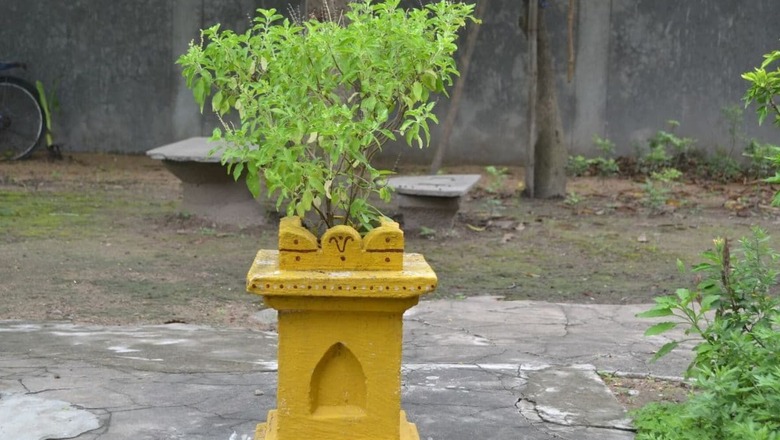
views
In the Hindu religion, Tulsi holds a revered position and is deemed as the adornment of every household courtyard. Nonetheless, during the winter season, the Tulsi plant requires special care as it tends to wither due to cold winds and fog. The wilting of the Tulsi plant is considered inauspicious, with a belief that in homes where Tulsi starts to wither, poverty may prevail. Below are some practical tips to protect the Tulsi plant during the winter season.
1. Protect from cold weather
Shielding the tulsi plant from the harsh winter weather, such as cold winds and fog, is essential. Maintaining a protective barrier around the plant safeguards it from external elements, preventing withering and preserving its overall health.
2. Use Lukewarm Water
It’s advisable to choose lukewarm water when watering your basil plant during the winter season. Cold wind can be the prime reason for dry tulsi leaves, so using lukewarm water helps maintain optimal moisture levels. If possible, mix some raw milk with the water before giving it to the basil.
3. Consider Pot Size
The size of the pot plays an important role in the watering regimen. Adjust the amount of water based on the pot size to ensure that the basil plant receives adequate hydration. This tailored approach helps maintain a healthy balance for the plant.
4. Moderate Watering
Potted basil plants have different water requirements during the winter months. To prevent both overwatering and drying, it’s crucial to adopt a moderate watering approach. Evaluate the plant’s needs and provide an appropriate amount of water accordingly.
5. Add Fresh Soil
To keep your basil plant healthy, make sure to mix in fresh soil regularly. Old soil doesn’t have enough oxygen for the plant to grow well, and this can cause it to dry up. Adding fresh soil helps the roots get the oxygen they need, keeping the plant in good shape.
6. Don’t pick too many leaves
Many people use basil leaves for various reasons, including medicinal and religious purposes. But if you pluck too many leaves, the tulsi plant can dry up and start to rot. It’s best to avoid overharvesting to keep the plant healthy.




















Comments
0 comment